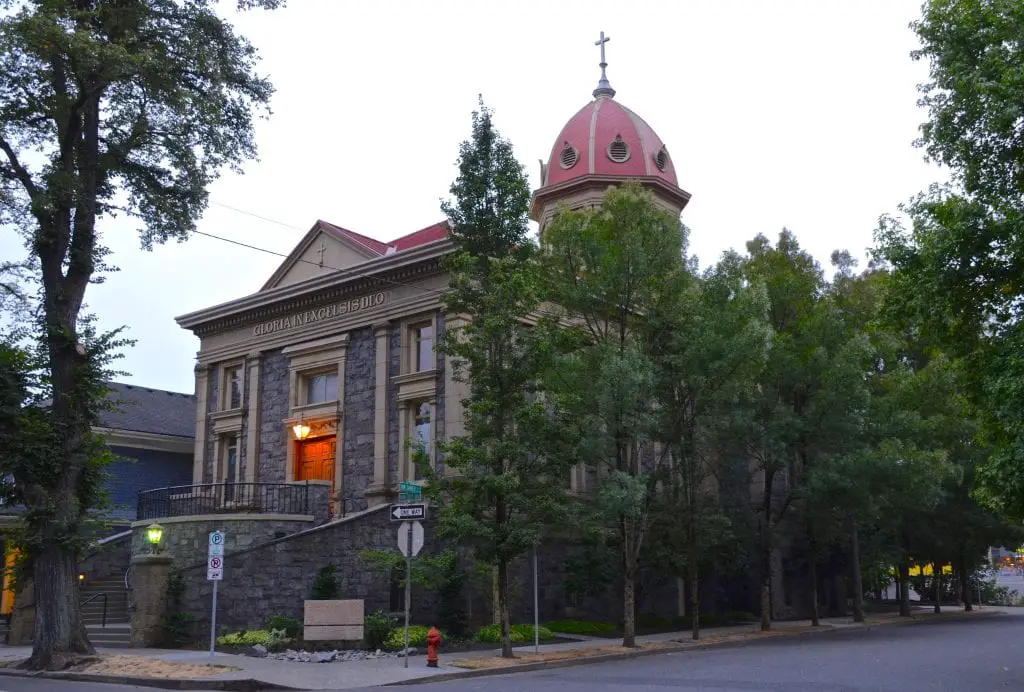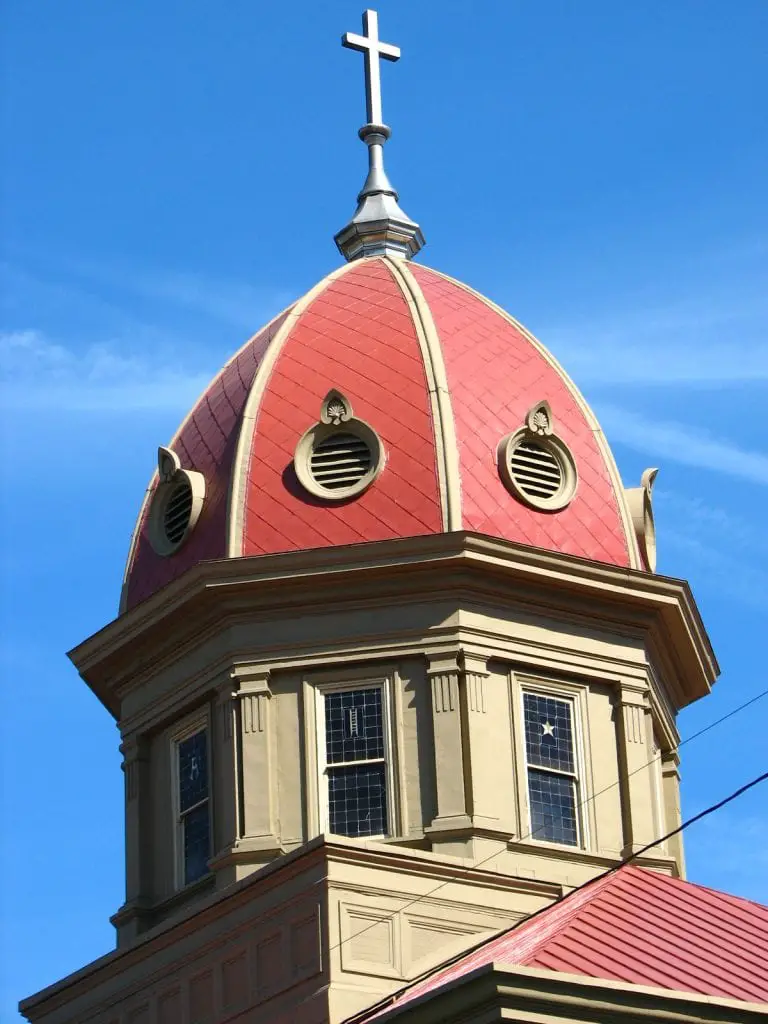Architectural Design
Nestled in the heart of Portland, Oregon, St. Patrick Catholic Church is a testament to architectural brilliance and historical significance.
The church’s exterior is a marvel, designed by Otto Kleemann in the Second Renaissance Revival style and originally planned as a brick structure, a last-minute decision led to using Clackamas County basalt, lending a unique character to the building.
The church’s cruciform shape is adorned with an Italianate-hipped dome and spire, rising 35 feet above the roof’s ridge. Ionic pilasters separate the bays, extending from the basement to the entablature, giving a sense of grandeur and elegance. The stained glass windows, some of the earliest works of the Povey Brothers Studio, add a touch of color and artistry.
The church waited until 1914 to complete its interior, marking its silver jubilee. Swiss artist Phillip Staehli was commissioned to decorate the plaster and lath with murals, including a fresco of the Transfiguration of Jesus.
Lifesize paintings of Saint Patrick and Saint Bridget, along with frescoes of principal saints of Ireland, grace the nave, creating an atmosphere of reverence and beauty.
Historical Development
The roots of St. Patrick Catholic Church reach back to 1885 when Archbishop William Hickley Gross established the community.
Serving the Irish Catholic lumber and dockworkers in the industrial areas of Slabtown and the Pearl District, the church quickly became a spiritual home. The cornerstone was laid on Saint Patrick’s Day 1889, and though unfinished, it was dedicated two years later.

In 1918 St. Patrick Catholic Church expanded its reach by building a Catholic school operated by various religious orders. The parish registry swelled with new immigrants from Croatia, Slovakia, and Slovenia, reflecting the melting pot of the community. However, as the neighborhood became more industrialized, attendance fell, leading to the school’s closure in 1957.
The Fremont Bridge and Interstate 405 construction further disrupted the neighborhood, causing the parish to revert to a mission church by 1972.
With only 60 registered families, the church faced an uncertain future. But in 1980, a new direction emerged when Bishop Paul E. Waldschmidt selected the church to serve the Hispanic population of Portland.

Cultural and Community Impact
St. Patrick Catholic Church has always been more than just a building; it’s a vibrant community hub. The church’s transformation into a mission church and subsequent revival to serve the Hispanic population marked a new chapter in its history. In June 1985, it also became home to the Latin choir Cantores in Ecclesia, adding a musical dimension to its cultural offerings.
The church’s centennial celebration in 1989 was a significant milestone, reflecting its enduring presence in Portland, Oregon.
The diverse congregations have found a shared spiritual home in St. Patrick Catholic Church. The church continues to be a place of worship, community, and cultural exchange.

St. Patrick Catholic Church In Popular Culture
St. Patrick Catholic Church isn’t just a place of worship but part of Portland’s cultural fabric. Its beautiful architecture and rich history have made it a sought-after location for filmmakers.
A wedding scene in the 2004 film “What the Bleep Do We Know” was filmed at St. Patrick’s, showcasing the church’s aesthetic appeal.
This cinematic connection adds a layer of modern relevance to the church, bridging the gap between its historical significance and contemporary culture. It’s not just a place for the faithful; it’s a symbol of Portland’s artistic and cultural identity.

Current State and Future Prospects
Today, St. Patrick Catholic Church continues to thrive as a parish of the Archdiocese of Portland. Its role in serving various communities, including the Hispanic population, has set the stage for a revival. The church’s current status is a testament to its adaptability and resilience.
The future looks promising for St. Patrick’s. Its continued cultural significance, community engagement, and architectural beauty ensure that it remains a vital part of Portland’s landscape.
Challenges may arise, but the church’s rich history and strong community bonds position it well for continued success and growth.

Conclusion
St. Patrick Catholic Church is more than a historical landmark; it’s a legacy. Its architectural design, historical development, cultural impact, and role in popular culture make it a unique and cherished part of Portland.
Its story is one of perseverance, adaptability, and community. As it stands tall in the heart of Portland, it invites all to partake in its rich heritage and vibrant present.
